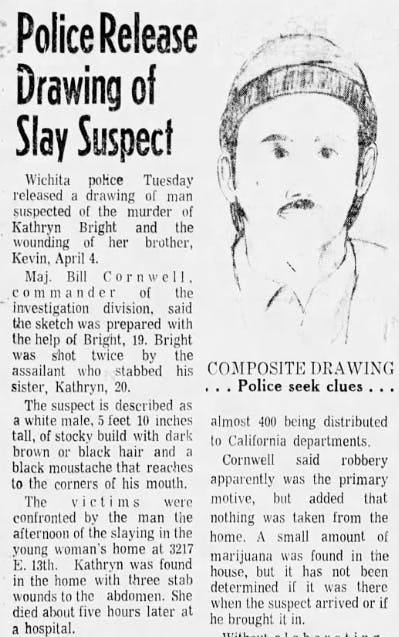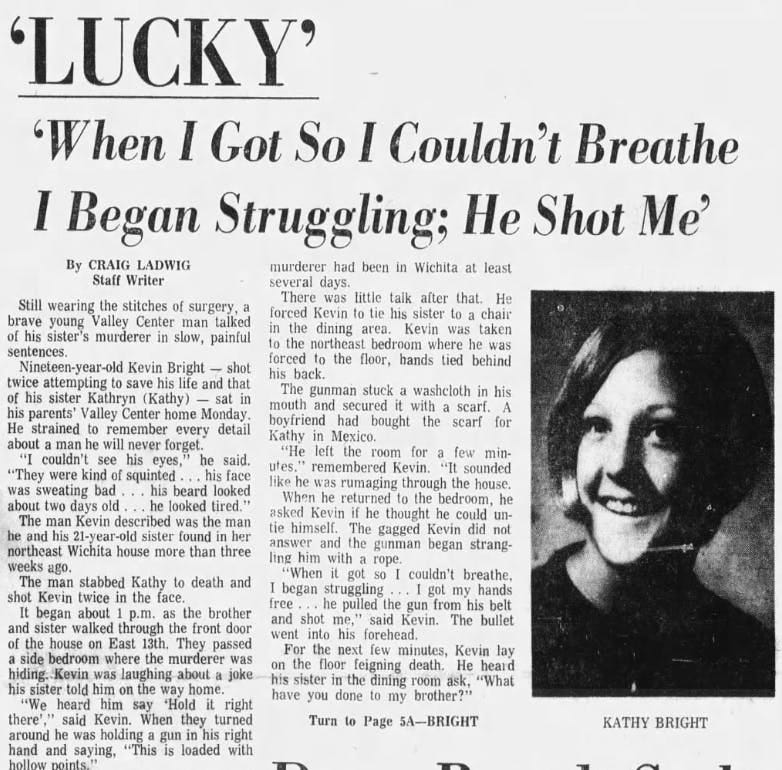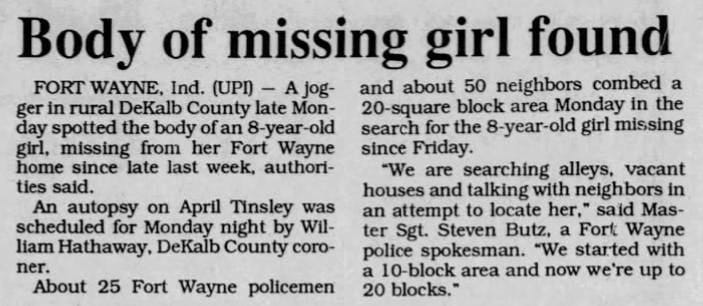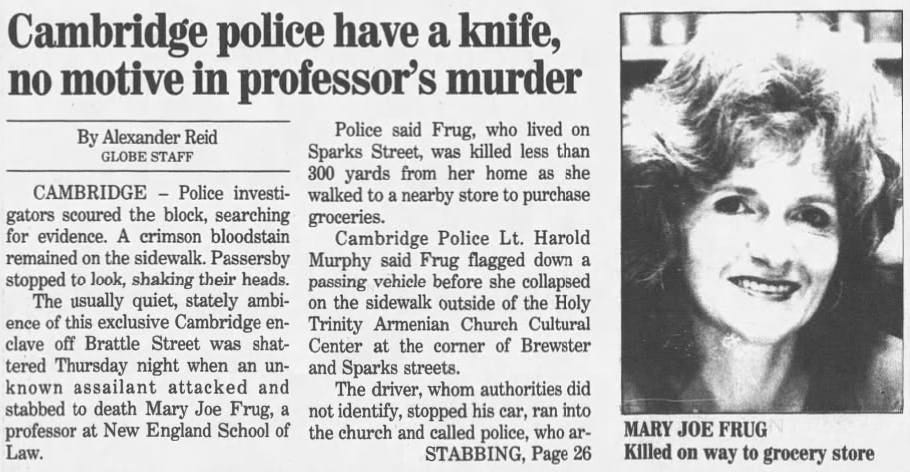BTK's only known survivor fights back
Plus: the Hinterkaifeck murders, law professor stabbed to death, and more.
1922: The Hinterkaifeck murders are discovered
It’s been called “Germany’s coldest case.”
On a lonely farm an hour from Munich, six battered bodies were discovered on this day in 1922. All had been smashed to death by a mattock, a farm tool similar to a pickaxe.
In the barn: 35-year-old Viktoria Gabriel, her 7-year-old daughter Cäzilia, and her parents Andreas and Cäzilia Gruber. In the house: Viktoria’s 2-year-old son Josef, and the family’s maid, Maria Baumgartner.
Not only was the crime scene gruesome, but more chilling details emerged over the following days. There were signs that the murderer had lived in the farmhouse for several days after killing the family.
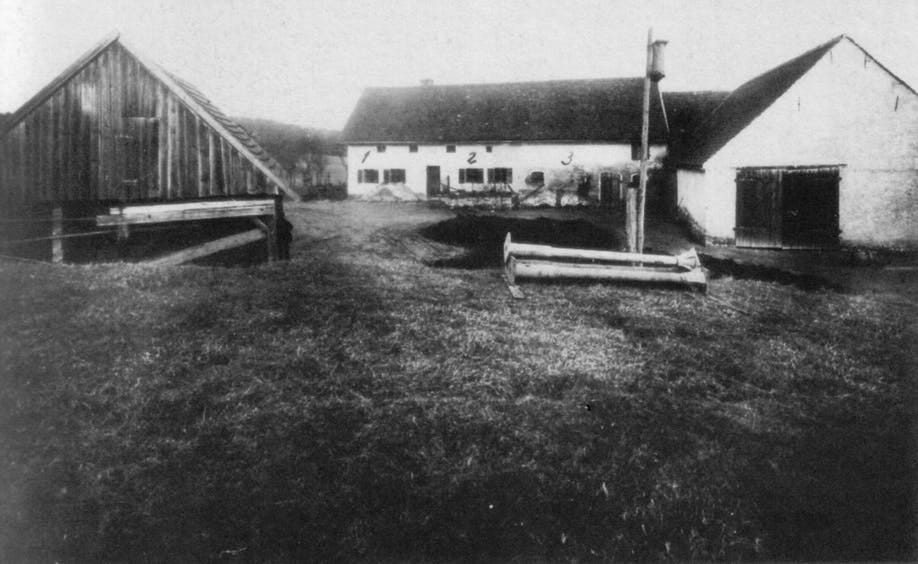
All the animals were well fed; a neighbor spotted smoke from the chimney, and someone had eaten their way through the family’s bread supplies. Plus, a house key was missing.
Had the killer also been hanging around the farm before the murders? Neighbors remembered that Andreas Gruber had noticed a few weird things around his farm before he was murdered. At one point, he found a newspaper lying around, one that he didn’t subscribe to and didn’t remember buying.
Another time, he found footprints heading out of the nearby forest and toward his machine room—which now had a broken lock. Even more creepily, the family recently had a maid quit on them because she claimed strange noises were coming from the attic.

Later, she said she felt like she was constantly being watched. Did the Grubers have someone living in their attic? Did that someone kill them?
No one knows. Suspicion fell on several men with connections to Viktoria—her boyfriend, her ex-husband—but no one was ever charged with the murders.
The viciousness of the attack seemed to imply that it was done by someone who hated the family, someone with an ax to grind. But over a hundred years later, the case remains as cold as the snow that held those mysterious footprints.
Dive Deeper
Read: The Chilling Story of the Hinterkaifeck Killings, Germany’s Most Famous Unsolved Crime (Mental Floss)
Listen: The Hinterkaifeck Murder (Gruesome: Horrific True Crime)
Watch: The Hinterkaifeck Murders (The Casual Criminalist)
1974: The BTK Killer’s only known survivor fights back
He’s perhaps the neediest serial killer of all time—Denis Rader, who once left a box of cereal at a crime scene so everyone would know he was a serial killer.
He gave himself his own nickname—BTK, for Bind, Torture, Kill—and wrote poetry worthy of an 8th grader’s Myspace page. And he loved to tie people up.
On April 4, 1974, Rader hid inside the Wichita home of 21-year-old Kathryn Bright, and when she walked through the door with her 19-year-old brother Kevin, Rader pointed a gun at them and said, “Hold it right there.”
Kevin’s presence was unexpected. Rader had been watching Kathryn for a while and expected her to return home alone. He had to pivot, tying up both siblings in different bedrooms, and telling them he was just looking for money and a car, and wasn’t going to hurt them.
Kathryn fought him so hard that he wasn’t able to strangle her to death, as he’d planned, so he ended up stabbing her in the stomach. He tried to strangle Kevin, but Kevin fought too, jumping up and even managing to get Rader's gun away from him at one point.
Somehow, though, the gun didn’t fire when Kevin pulled the trigger, and Rader wrestled it back, shot Kevin once, left the room—and then came back to shoot him a second time. Kevin survived by playing dead.
When he heard Rader leave, Kevin sprinted out of the house to get help. Kathryn was still alive, too, and she was taken to the hospital—but despite emergency surgeries and blood transfusions, she didn’t make it.
Rader wasn’t captured until 2004, when he wrote to police and asked if he could anonymously send them a floppy disk. The police replied, Sure! Floppy disks are totally untraceable!
This was a lie, of course, and the infamous disk led them quickly to Rader himself.
In 2023, Rader’s daughter tweeted, “The only known survivor of BTK is Kevin Bright, who at the age of 19 nearly handed my dad his rear.”
Dive Deeper
Short read: Victim's brother describes killing linked to BTK (CNN)
Long read: Bind, Torture, Kill: The Inside Story of BTK, the Serial Killer Next Door, Roy Wenzl, Tim Potter, L. Kelly, Hurst Lavania
Listen: REOPENED: Finding BTK (Cold Case Files)
Watch: Woman discovers her father is notorious BTK serial killer (Nightline)
1988: April Tinsley’s body is found in a ditch
Little 8-year-old April Tinsley was playing with her friends in Fort Wayne, Indiana when she ran home to get an umbrella—and met a horrifying man named John Miller instead. He kidnapped, raped, and strangled her.
Three days later, on April 4, a jogger found her body in a ditch.
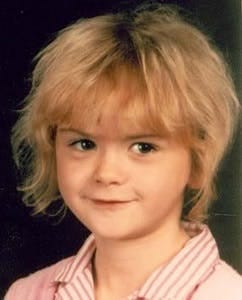
Her case remained unsolved for the next thirty years, though the killer made his presence known again and again. He left notes—some written in crayon—on the sides of a barn and little girls’ bicycles, saying that he had murdered April Tinsley and that he was watching other little girls and planning to kill again.
The notes on the bikes were accompanied by photos of his naked body and used condoms (whose DNA matched the DNA found on April). Detectives had all the evidence they needed—they just didn’t have the technology to utilize all that DNA.
It wasn’t until 2018 that they were able to run the samples and find 59-year-old John Miller, a loner who worked the midnight shift and lived in a trailer.
They took him in for questioning, and he brought up Tinsley’s name before they did, as though he were looking for a chance to confess. Miller told them that he had been wandering her neighborhood, specifically looking for a child to kill.
Today, he’s in jail for life, though April’s parents pushed for the death penalty. “We have one less monster on the street,” said a detective who worked on the case.
Dive Deeper
Read: Tinsley detectives reveal new details about case, suspect (WANE 15)
Listen: April Tinsley & The Monster in Fort Wayne (Crime Junkie)
Watch: Predator at Large, Season 1, Episode 6
1991: Law professor Mary Joe Frug is stabbed to death
Was Mary Joe Frug killed because she was…too feminist?
That's the theory that cops were working with for some time. The 49-year-old professor at the New England School of Law was known for her (somewhat) controversial scholarship, and her murder seemed targeted and full of rage.
She was stabbed to death on the street in Cambridge, not far from her home, and her murderer didn't take her purse. This wasn't a robbery—there was something personal about the attack.
Who wielded the 11-inch military knife that killed her? An angry colleague? A disgruntled student? Cops even pursued the theory that a student who was in love with her had murdered her. But none of their leads panned out.
Her case is still technically open and unsolved. A cold case unit took it up in 2019, releasing a rather depressing statement: "Although to date we have been unable to identify who killed Frug or what the motive may have been, we continue to try to answer those questions."

Witnesses saw a man running from the scene—a young man, 20ish, 5'10" to 6' 0" tall, with white skin and brown hair. Cops recovered his shoe prints, but that's as far as it goes.
Frug was killed outside a church while the choir was singing inside. She was nicely dressed. "Some members of the choir thought she could have been coming to sing with them," wrote The Boston Globe at the time of her death.
Dive Deeper
Short read: True Crime: Killed off campus (The Boston Globe)
Long read: The Tragedy of a Cambridge Feminist, Ellen Lapointe St. John Fisher University
Listen: Mary Joe Frug (A Little Wicked)


